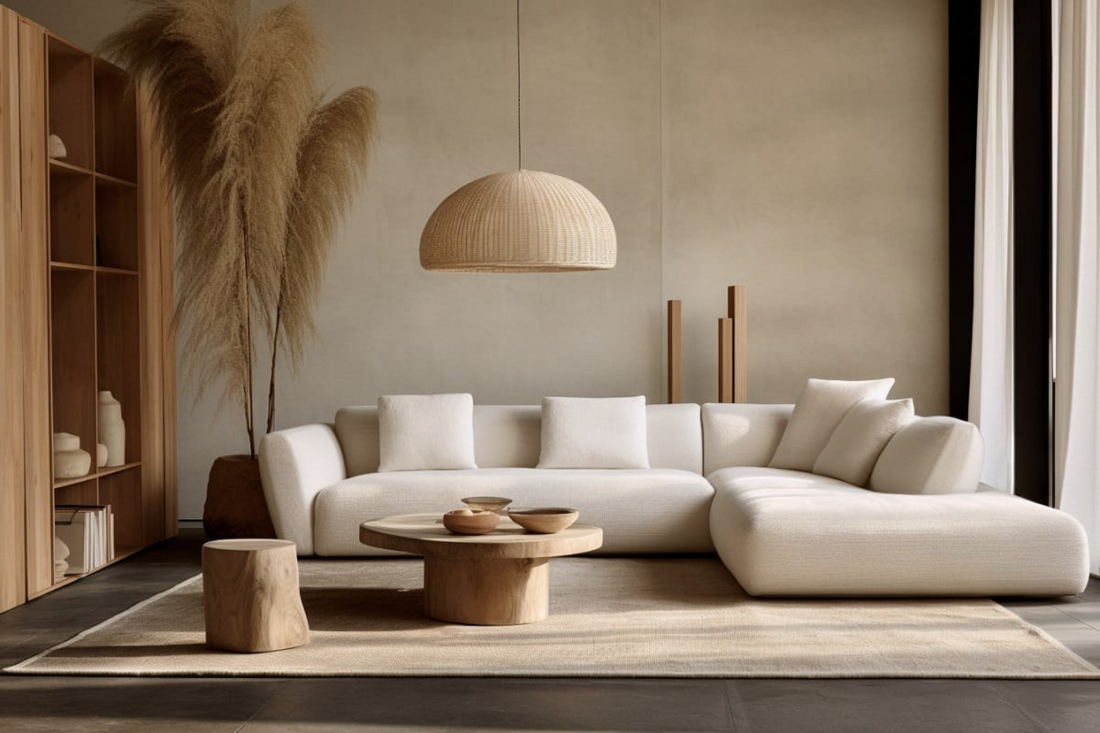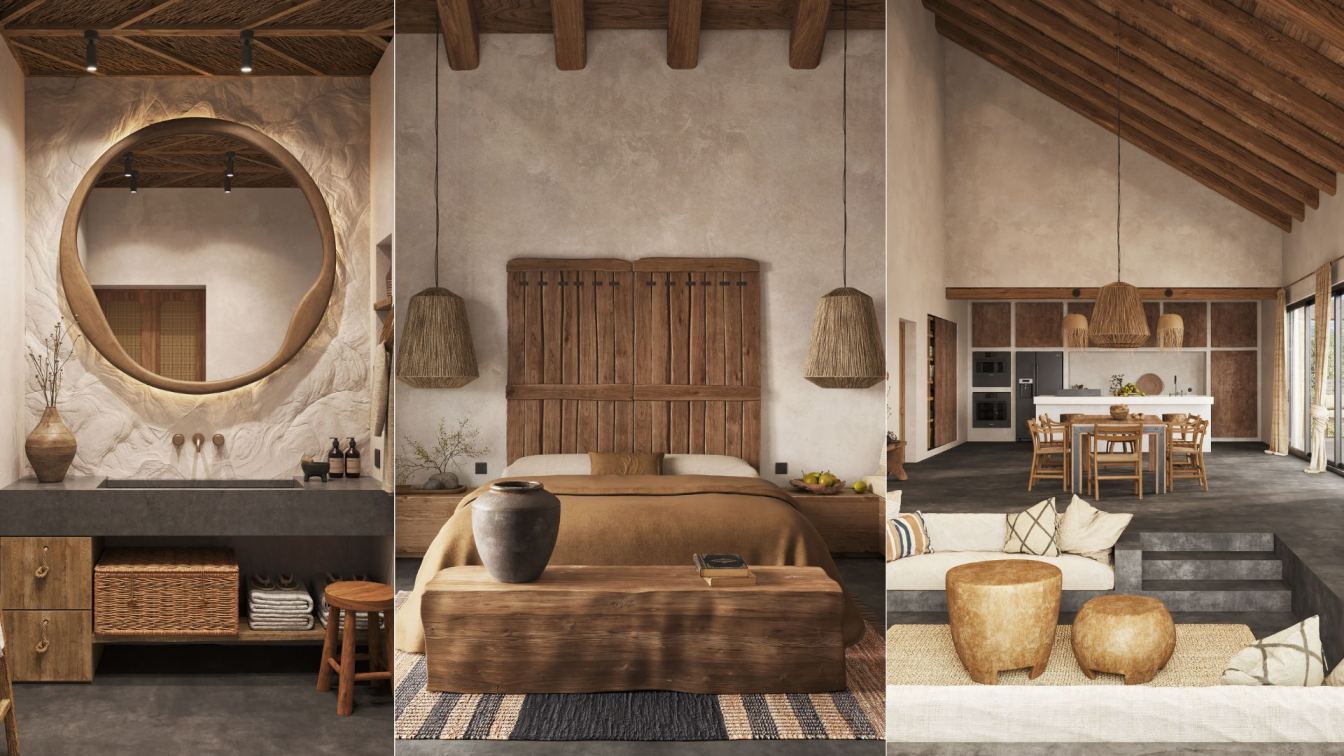In a world that often glorifies perfection and order, the philosophy of wabi sabi offers a refreshing perspective by celebrating the beauty found in imperfection and transience. This Japanese aesthetic can transform your home into a serene retreat that feels both inviting and deeply personal. In this article, we’ll explore what wabi sabi means, how to incorporate it into your home decor, and share my personal experiences along the way.
Understanding Wabi Sabi
Wabi Sabi is a Japanese term that encompasses a worldview centered on the acceptance of transience and imperfection. Essentially, it invites us to find beauty in the natural cycle of growth and decay. Here’s a deeper look:
The Origins of Wabi Sabi
Wabi sabi originated in ancient Japan, initially linked to the tea ceremony. It was a reaction against the extravagance and materialism of the time. Instead, it emphasized simplicity and the beauty of natural materials.
The Core Principles of Wabi Sabi
- Imperfection: Acknowledging that nothing is perfect adds character and charm.
- Transience: Recognizing that all things are temporary helps us appreciate the present.
- Simplicity: Minimalism and the removal of excess lead to a more fulfilling space.
- Natural Materials: Using organic materials enhances the connection to nature.
Incorporating Wabi Sabi into Your Home Decor
Now that we’ve established what wabi sabi is, let’s dive into practical ways to embrace this philosophy in your home decor.
Choosing Natural Materials
To embrace wabi sabi, opt for furnishings made from natural materials like wood, stone, and clay. These materials not only age beautifully but also create a warm and inviting atmosphere.

Examples of Natural Materials
| Material | Characteristics | Wabi Sabi Appeal |
|---|---|---|
| Wood | Warm tones, unique grain patterns | Each piece tells its own story over time |
| Ceramics | Handcrafted, often imperfect | Emphasizes the beauty of handmade items |
| Stone | Weathered textures, organic shapes | Connects us to the earth and nature |
Emphasizing Imperfections
When choosing decor, don’t shy away from pieces that show signs of wear or have minor flaws. A chipped vase or a rustic coffee table can add character and a sense of history to your space.

Personal Experience
In my own home, I have a vintage side table that has seen better days. It has scratches and dents, yet those imperfections remind me of the countless memories created around it. This approach brings a sense of warmth that new, flawless furniture simply cannot replicate.
Opting for Earthy Color Palettes
The colors in wabi sabi decor are inspired by nature. Opt for earthy tones such as browns, greens, and soft grays to create a calming environment.
Color Palette Ideas
- Soft beige and taupe
- Muted greens and sage
- Rusty reds and browns
- Deep blues and grays

Minimalism and Decluttering
Wabi sabi encourages embracing simplicity, so it’s time to declutter. Start by removing items that don’t serve a purpose or spark joy. Keep only what you love and what tells your story.
How to Declutter
- Start with one room at a time.
- Ask yourself if each item is functional or meaningful.
- Donate or recycle items that no longer serve you.

Creating a Wabi Sabi Atmosphere
It’s not just about the physical items in your home but also the atmosphere you create. Here are some tips to cultivate a wabi sabi ambiance:
Use Soft Lighting
Natural light is ideal, but when it’s not available, use soft lighting to create a cozy atmosphere. Consider using paper lanterns, warm-toned bulbs, or candles to promote relaxation.

Incorporate Plants
Bringing nature indoors is a key element of wabi sabi. Incorporate houseplants that not only purify the air but also add life to your decor. Remember, plants are not just decoration; they require care, which emphasizes the transient nature of life.
Mindful Decor Choices
Every piece should resonate with you on a personal level. Whether it’s a piece of art, a family heirloom, or a handmade item from a local artist, choose items that reflect your journey and values.

Pros and Cons of Wabi Sabi Home Decor
Like any decor style, wabi sabi comes with its own set of advantages and challenges. Here’s a breakdown:
Pros
- Promotes mindfulness and appreciation of the present
- Encourages eco-friendly choices through natural materials
- Creates a warm, inviting atmosphere
- Reduces stress through minimalism and decluttering
Cons
- May require a shift in mindset for those accustomed to perfectionism
- Can be challenging to find wabi sabi pieces that resonate
- Requires ongoing maintenance and care for natural elements
Wabi Sabi vs. Other Decor Styles
Understanding how wabi sabi differs from other home decor styles can help you choose the right approach for your space.
Wabi Sabi vs. Minimalism
| Aspect | Wabi Sabi | Minimalism |
|---|---|---|
| Focus | Beauty in imperfection | Functional simplicity |
| Decor Elements | Natural materials, aged pieces | Neutral colors, modern designs |
| Atmosphere | Warm, inviting | Clean, open |
Wabi Sabi vs. Scandinavian Design
| Aspect | Wabi Sabi | Scandinavian Design |
|---|---|---|
| Focus | Imperfection and nature | Simplicity and functionality |
| Color Palette | Earthy tones | Light, bright colors |
| Key Features | Age, patina, organic shapes | Clean lines, minimalistic approach |
Frequently Asked Questions (FAQs)
What is the meaning of wabi sabi in home decor?
Wabi sabi in home decor refers to embracing imperfections and the beauty of the natural world. It encourages finding aesthetic appeal in the transient and the organic.
How can I start incorporating wabi sabi into my home?
Begin with small changes, such as decluttering, selecting natural materials, and choosing decor items that resonate with you personally. Focus on creating a warm and inviting atmosphere.
Can wabi sabi be combined with other decor styles?
Absolutely! Wabi sabi can be beautifully integrated with various styles, including minimalism and Scandinavian design, for a unique and eclectic home.
Is wabi sabi only for interior design?
No, wabi sabi can influence various aspects of life, including art, gardening, and lifestyle choices, promoting a broader appreciation for imperfection and nature.
What are some essential wabi sabi decor items?
Key items include handmade ceramics, vintage furniture, natural textiles, and organic shapes, all of which celebrate the uniqueness and beauty of imperfection.
Conclusion
Wabi sabi home decor opens the door to a deeper understanding of beauty and connection to our surroundings. By embracing imperfections and celebrating the natural world, we can create spaces that are not only visually appealing but also supportive of our mental wellbeing. My journey into wabi sabi has transformed not just my home, but also my approach to life—reminding me that there is profound beauty in the imperfect, the transient, and the simple.
Start your own wabi sabi journey today and embrace the serene comfort it brings to your home!